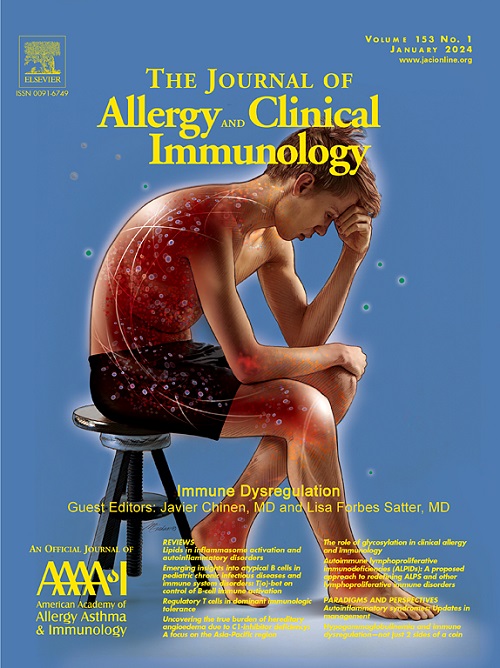食物过敏的新诊断。
IF 11.4
1区 医学
Q1 ALLERGY
引用次数: 0
摘要
食物过敏的患病率正在上升,并对个人及其家庭构成重大挑战,对他们的生活质量产生不利影响。误诊可导致不必要的饮食和社会限制,并增加食物过敏风险,而未能诊断可能导致危及生命的过敏反应。因此,精确的诊断是至关重要的;然而,在诊断过程的每个阶段都存在障碍。食物过敏的诊断依赖于临床病史、IgE致敏试验和口腔食物挑战。组件测试和最佳截止的识别提高了诊断的准确性。然而,许多患者仍然需要口腔食物挑战,需要更好的测试来减少这种情况。新的生物标志物,如嗜碱性粒细胞激活试验和肽IgE试验,正在过渡到临床实践。未来的方法可能包括替代生物样本、新的实验室技术和分析工具,包括人工智能,以整合测试结果和临床信息。认真使用现有的测试,获得具有卓越诊断准确性的测试和测试组合,可以提高食物过敏诊断的准确性,并及时在饮食中引入耐受食物。本文综述了食物过敏诊断新方法的最新进展,这些新方法可以增强现在和将来的临床决策。本文章由计算机程序翻译,如有差异,请以英文原文为准。
Novel diagnostics in food allergy
Food allergy is increasing in prevalence, posing significant challenges for individuals and their families and adversely affecting their quality of life. Misdiagnosis can lead to unnecessary dietary and social limitations and increased food allergy risk, whereas failure to diagnose may result in life-threatening anaphylaxis. Therefore, a precise diagnosis is of the utmost importance; however, barriers exist at every stage of the diagnostic process. Diagnosis of food allergy relies on clinical history, IgE sensitization tests, and oral food challenge. Component testing and identification of optimal cutoffs have improved diagnostic accuracy. Nevertheless, many patients still require an oral food challenge, and better tests are needed to reduce this need. Novel ways of detecting biomarkers, such as the basophil activation test and peptide-specific IgE level, are transitioning into clinical practice. Future approaches may include the use of alternative biologic samples, novel laboratory technologies, and analytic tools (including artificial intelligence) to integrate test results and clinical information. Conscientious use of existing tests, access to tests with superior diagnostic accuracy, and combination of tests, can lead to improved precision of diagnosis of food allergy and timely introduction of tolerated foods into the diet. This review summarizes recent advances in novel approaches to food allergy diagnosis that can enhance clinical decision making both now and in the future.
求助全文
通过发布文献求助,成功后即可免费获取论文全文。
去求助
来源期刊
CiteScore
25.90
自引率
7.70%
发文量
1302
审稿时长
38 days
期刊介绍:
The Journal of Allergy and Clinical Immunology is a prestigious publication that features groundbreaking research in the fields of Allergy, Asthma, and Immunology. This influential journal publishes high-impact research papers that explore various topics, including asthma, food allergy, allergic rhinitis, atopic dermatitis, primary immune deficiencies, occupational and environmental allergy, and other allergic and immunologic diseases. The articles not only report on clinical trials and mechanistic studies but also provide insights into novel therapies, underlying mechanisms, and important discoveries that contribute to our understanding of these diseases. By sharing this valuable information, the journal aims to enhance the diagnosis and management of patients in the future.

 求助内容:
求助内容: 应助结果提醒方式:
应助结果提醒方式:


